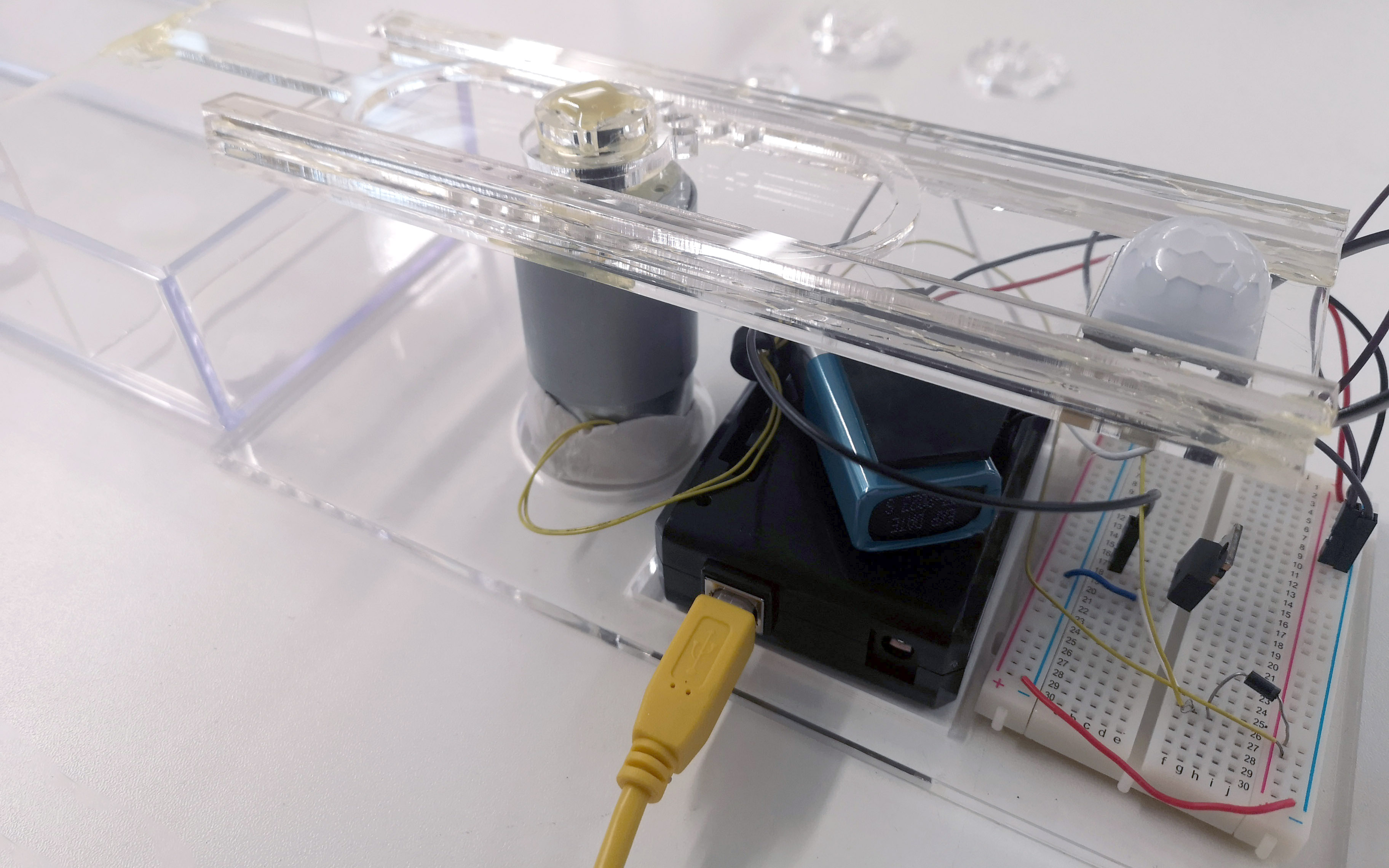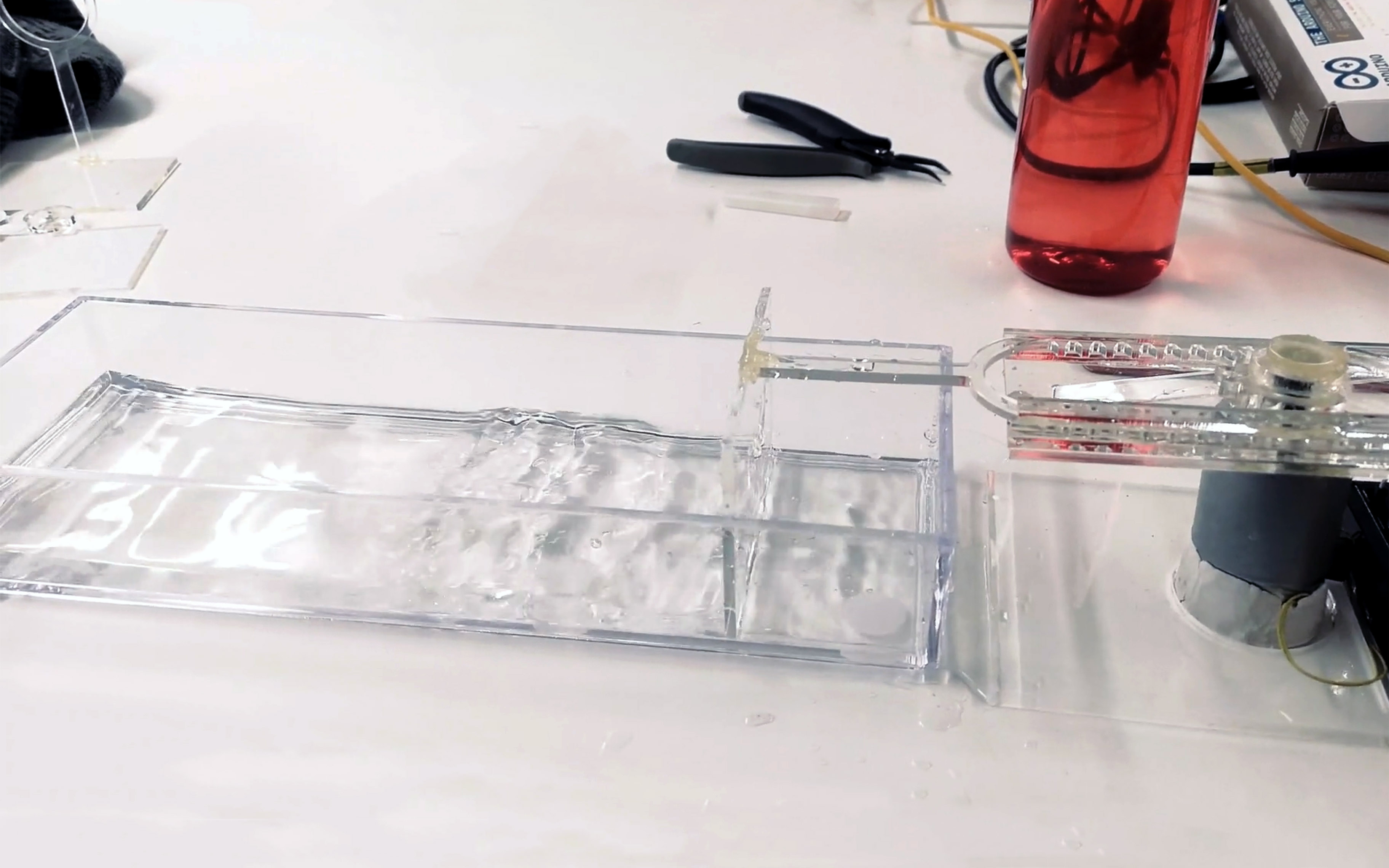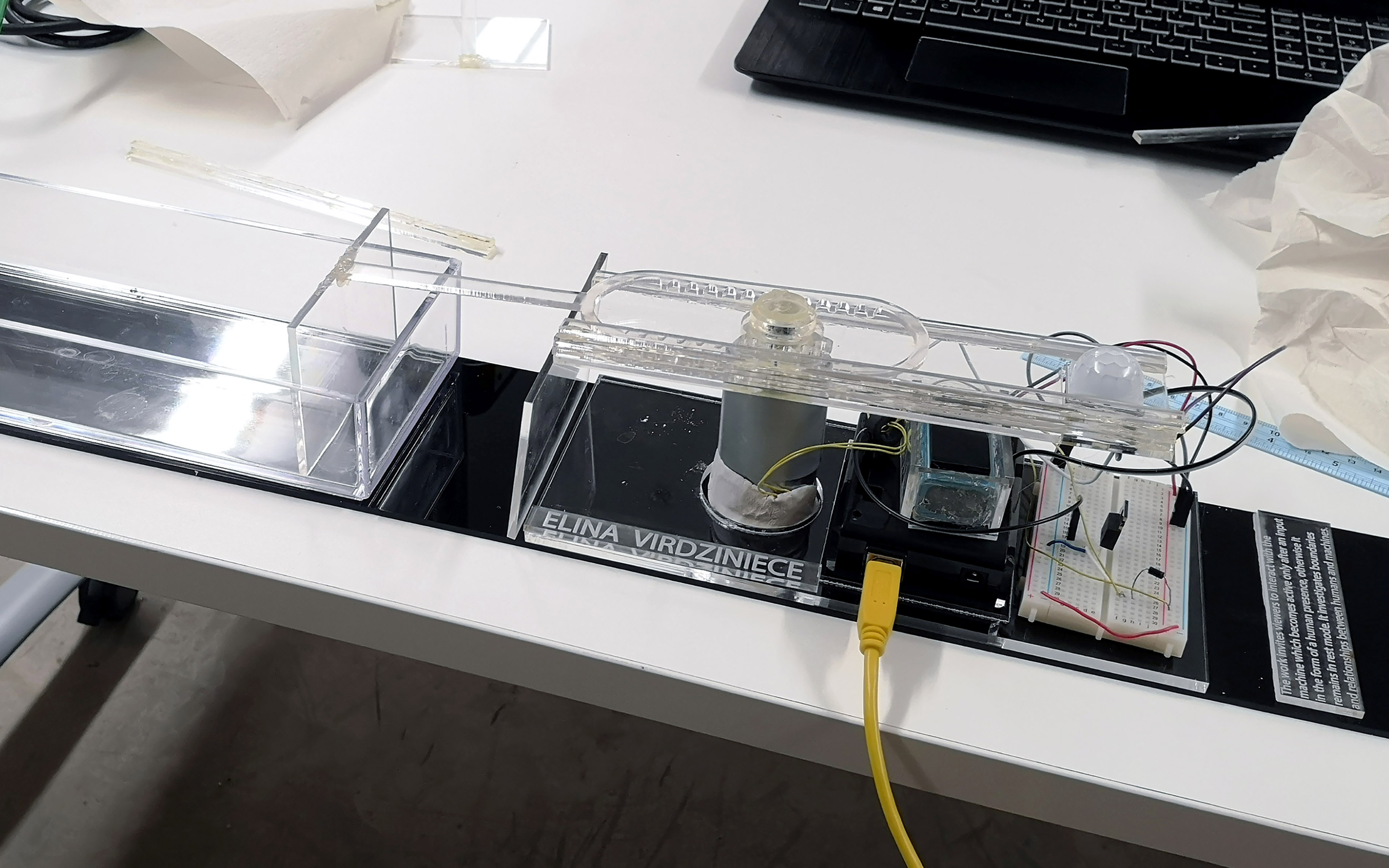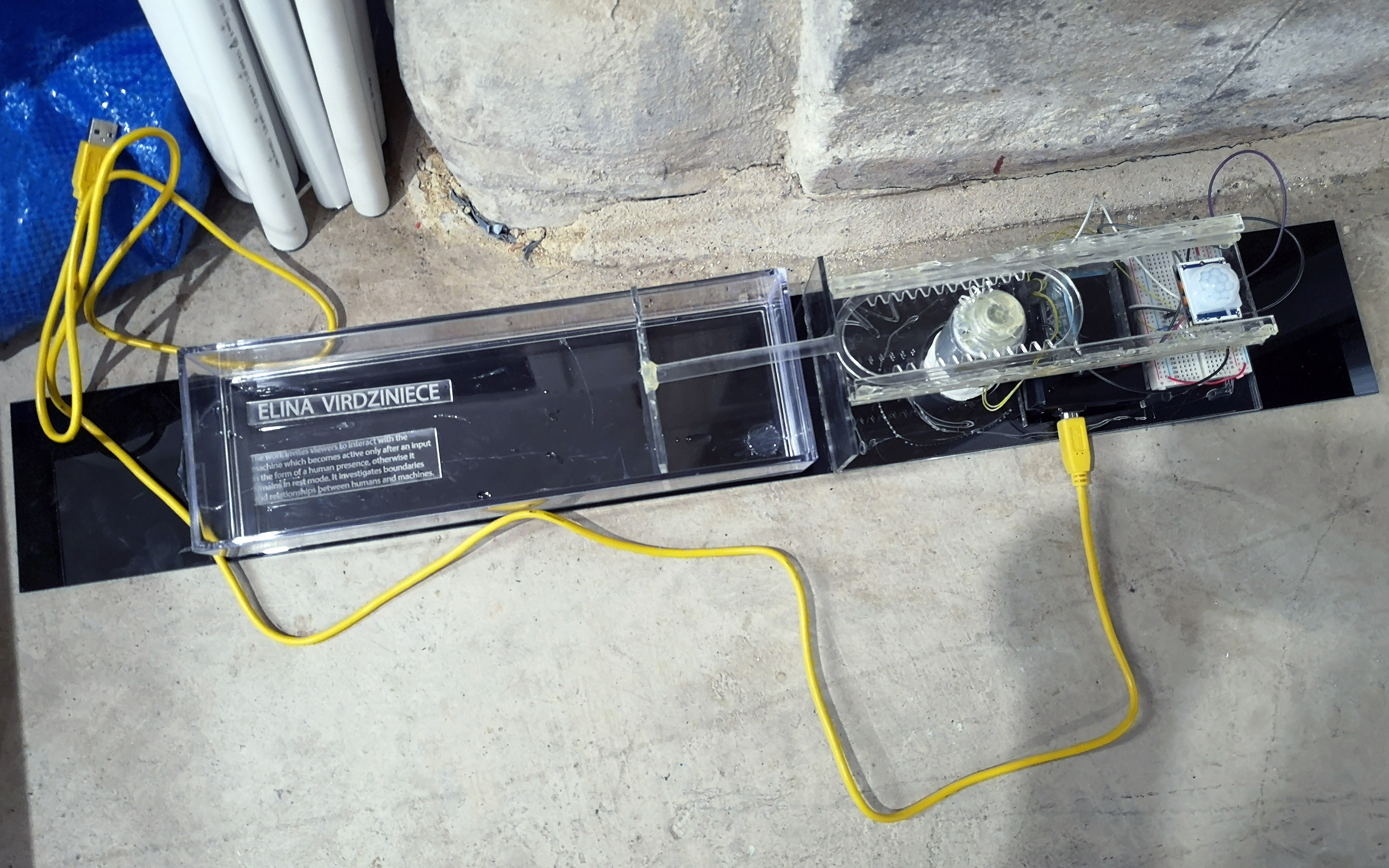Absence/ Presence
The work invites viewers to interact with the machine which becomes active only after an input in the form of a human presence, otherwise it remains in rest mode. It investigates boundaries and relationships between humans and machines.
produced by: Elina Virdziniece
Description
The active sensor area is outlined to invite the recipient to walk into it, otherwise the installation appears to be at rest state.
Machine responds by translating the presence of human in water movement – wave which has the possibility to overflow because of ‘crossing the boundaries’. If the person leaves the active area the machine stops, but if the participant chooses not to leave it causes a response of water to spill over the edges. The fact that the action space is clearly marked means that walking in to it indicates a conscious decision to participate and interact with the machine. Recipient non-intentionally creates the waves but the choice to leave or stay in the machines habitat is intentional.
However, the interaction doesn't end when all the workings of the system have been understood, if the interaction process is in itself aesthetically appealing or exciting the recipient will seek to repeat individual processes or try out alternative pattern of interaction. (Kwastek, 2015)
There is also an option of observing the interaction with the machine by other participants from distance if not stepping in to the active area.
“The terms absence and presence describe fundamental states of being. For this reason, they are difficult to define without referencing the terms themselves. The Oxford English Dictionary definitions of both terms are self-referential: “the fact or condition of being present” and “the state of being absent or away.” The difficulty of these terms stems from the fact that they are dependent upon the notion of being.” (Bell, 2018)
References:
1. Bell, A. (2018). absence/presence | The Chicago School of Media Theory. [online] Lucian.uchicago.edu. Available at: https://lucian.uchicago.edu/blogs/mediatheory/keywords/absencepresence/ [Accessed 3 Dec. 2018].
2. Firdaus, A. (2015). 1. Engineering Industrial Training Project at National Hydraulic Research Institute of Malaysia. Available at: https://youtu.be/Aw9yplDDJwA [Accessed 1 Dec. 2018].
3. Kwastek, K. (2015). Aesthetics of Interaction in Digital Art. Cambridge, Mass.: MIT Press, p.114.


































































